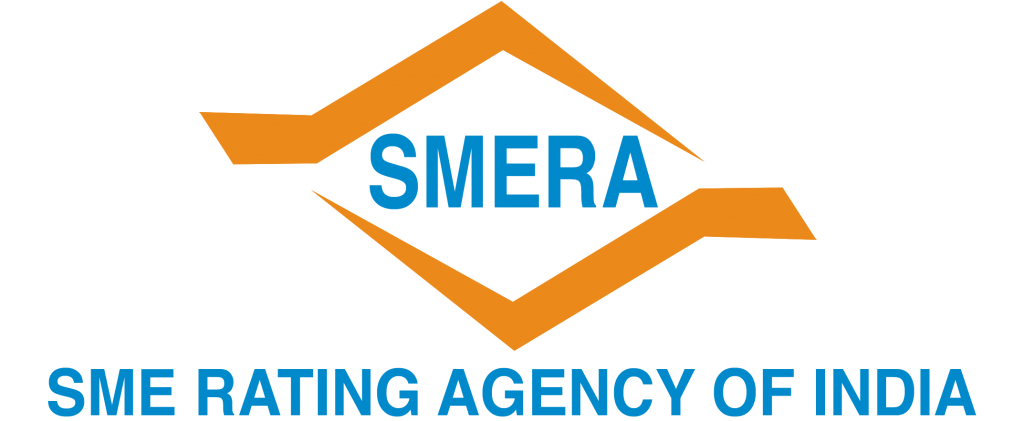SME credit: challenges and SMERA solutions
Small entrepreneurs usually have inspiring backstories. Their ascent to the top after enduring multiple challenges and setbacks is worth reiterating especially when countries need strong domestic markets to tide over economic downturns. Read on then…
A 15-year-old would sell newspapers in Bengaluru for just Rs 250 a month. Now in his 30s, he is the co-founder of an advertising and media promotion company with a turnover of Rs 4.5 crore.
An entrepreneur couple attempted to create something new with chikoo (Sapodilla). They launched their own company that produced wine from chikoo extracts, the first of its kind.
India’s economic history is replete with such absorbing stories — businesses that started with a unique idea and zero inventories. Relentless dedication is their only capital. They take a leap of faith, backed by community support and initial investments from family savings. As mentioned above, eventually it’s these businesses called Micro, Small and Medium Enterprises (MSMEs) that stabilise economies during business-cycle recessions.
A third of India’s GDP comes from the MSME sector, which accounts for roughly 63 million MSMEs and approximately 30% of the country’s GDP (Source: Mint).
The struggles…
Yet, these business entities often struggle for validation. Many MSMEs are either proprietorships or partnerships and hence are not registered under the Companies Act and resultantly lack any distinguishment. Their heterogeneity remains unacknowledged.
Moreover, their capacity for consistent capital generation, adaptability in the face of changing markets, and operational integrity are often viewed with scepticism. Consequently, they are deprived of a constant access to finance by lending institutions.
Since SMEs frequently rely on a small number of partners and contracts, particularly when acting as suppliers to larger businesses, volatility and risk levels are thought to be higher in the sector. For instance, when a global automaker was mired in crisis, some MSMEs that depended on the company’s operations missed bank payments owing to liquidity issues. While the company did not default, the MSMEs were labelled as NPLs by their banks, even though they paid their debts later.
Any movements, be it in domestic or international markets, impact them in some way. For instance, not too long ago, engineering exporters in India’s MSME segment sought government intervention to address the issue of escalating steel prices. They pointed out that affordable rates are essential to make them a competitive force in global markets.
Government’s reassuring support
Of late, the Indian government has extended support to these business entities by announcing several MSME-specific schemes:
· Prime Minister Employment Generation Programme
· National SC-ST-HUB
· Entrepreneurship and Skill Development Programme
· Market Promotion & Development Scheme
· Scheme of Surveys, Studies and Policy Research
· Technology Upgradation and Quality Certification
· Marketing Promotion Schemes
· Scheme for Promotion of Innovation, Rural Industries and Entrepreneurship
· Infrastructure Development Programme
· Scheme of Information, Education and Communication
· Scheme of Fund for Regeneration of Traditional Industries
The Statista reports: “As of February 2023, almost 13.8 million micro-enterprises were registered on the Indian government’s Udyam registration portal accounting for 96% of the MSME sector. Small and medium enterprises occupied around three and 0.28% respectively. There was a total of more than 14 million MSMEs registered on the platform.”
Is that enough?
Yet, despite these schemes intended to serve as growth drivers, they need SME credit for expansion. In business terminology, SME credit or SME loans cater to the financial needs of emerging business entities. At different stages of the business cycle, SME credit helps acquire raw materials, increase investments in machinery, and meet working capital requirements.
That said, granting SME credit is not a straightforward process especially when lenders and SME investors assess an SME’s creditworthiness. Lenders and banks ask for a thorough checklist like audited financial statements, complete accounting records, and business plans. Transaction costs increase when lenders support SMEs to procure these documents.
Secondly, the quality of collateral impacts an SME’s ability to secure financing. High-quality collateral in the form of real estate could increase the chances of loan approval. Generally, lenders prefer stable collateral that has low depreciation and is easy to liquidate. Low-quality collateral could translate into higher interest rates and stringent conditions for repayment. Lenders factor in the sector associated with the business entity, its prospects, and ability to repay the loan.
Additionally, lenders and SME investors evaluate the industry and market trends in which an SME operates. They gauge the target audience, growth potential, consumer response to the product, its differentiator, and the economic scenario prevalent then. Also, they assess whether the business entity has the heft to survive the competition and keep up with regulatory changes.
For sure, cash flow becomes a key consideration in SME lending along with the business’s capacity to generate consistent returns and make the most of favourable market scenarios.
The other aspects include:
- The business’s capacity to manage technological disruptions
- Foundation to cope with market volatility
- Contingency plans
- Risk mitigation strategies
- Ability to repay debt and provide returns on investment
- Constant revenue streams
The company’s management and track records are crucial factors in SME finance. Do they update themselves with market trends? Do they enjoy the faith of SME investors?
Why SMERA…
With so many parameters involved in SME lending, financers inevitably seek expert opinions before sanctioning loans. Identifying emerging opportunities and threats associated with a business is the domain of specialists like SME rating agencies. For example, Chennai’s SME sector had been incurring Rs 840 crore every week following the 2015 floods. It’s here that SME rating agencies present an accurate picture of whether a business model is equipped to deal with the vagaries of weather and other factors.
Thus, the need for specialised credit rating agencies was felt, and in 2005, SMERA — a joint venture involving the Small Industries Development Bank of India, Dun and Bradstreet, 5, and some commercial banks — was set up for rating SMEs and MSMEs.
SMERA’s comprehensive and transparent rating processes have a wider acceptance within India’s banking system. Not just that, SMERA ratings reduce the turnaround time in processing credit applications. Moreover, a favourable rating from SMERA leads to lower collateral requirements and reasonable interest rates.
Further, SMERA Ratings categorise SMEs based on size, so that each entity is evaluated amongst its peers. This enables rational comparison of companies of the same size, ensuring that SMEs are assessed fairly while applying for credit.
SMERA has pioneered many firsts in SME finance like:
QR code enabled Rating Reports: All rating/grading reports from SMERA are released with QR codes to verify the validity and authenticity of the same. A banker can easily scan a QR code and establish the latest rating of an entity from SMERA’s website.
SMERA Terminal: It’s a unique product to help bankers expand their credit portfolio profitably with the help of SMERA and facilitate easy and cheaper credit to SMEs.
A standardised rating system makes it easier to benchmark an entity’s parameters and validate claims which provides bankers, lenders, and SME investors with critical information for financing SMEs. Precisely the reason ‘Dial SMERA’ reverberates in business circles.
Services for SMEs
SME Credit Rating
Know more
Credit Due Diligence
Apply now.
SMERA Terminal
Sign up

